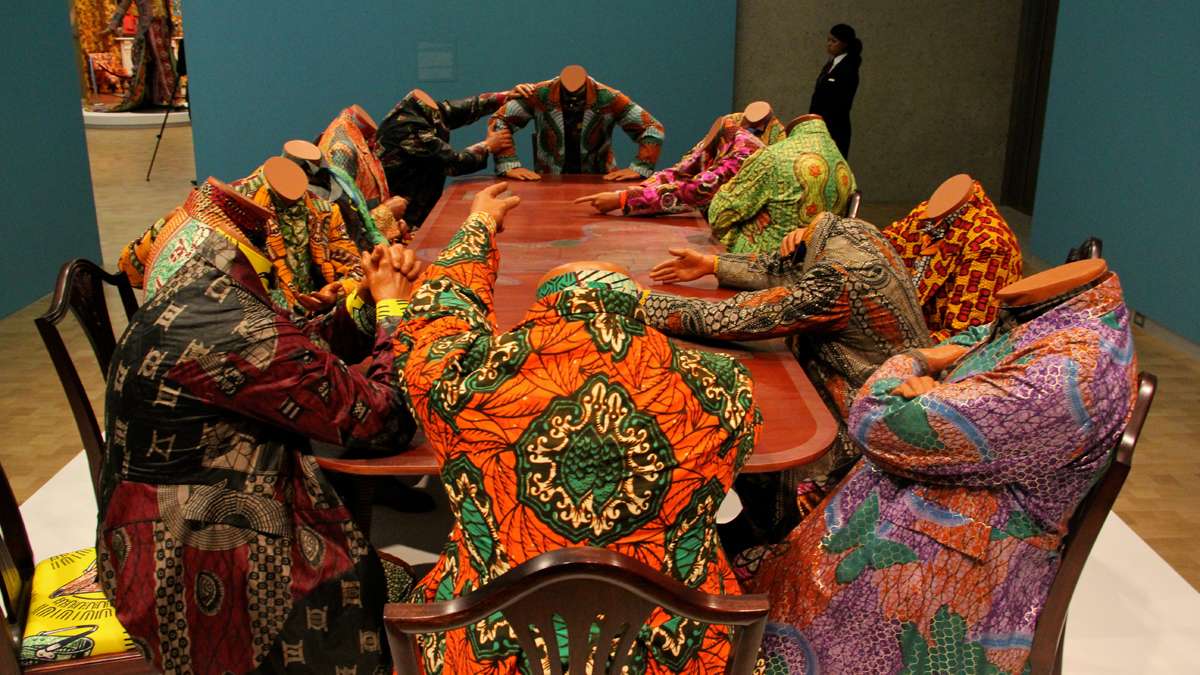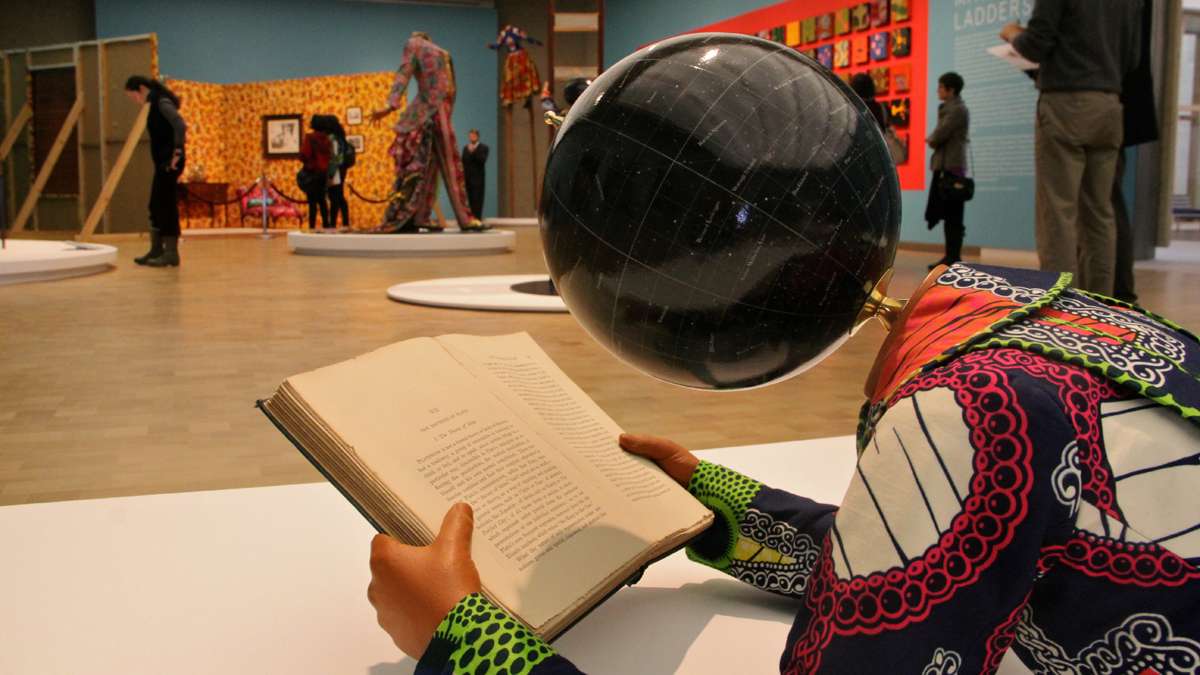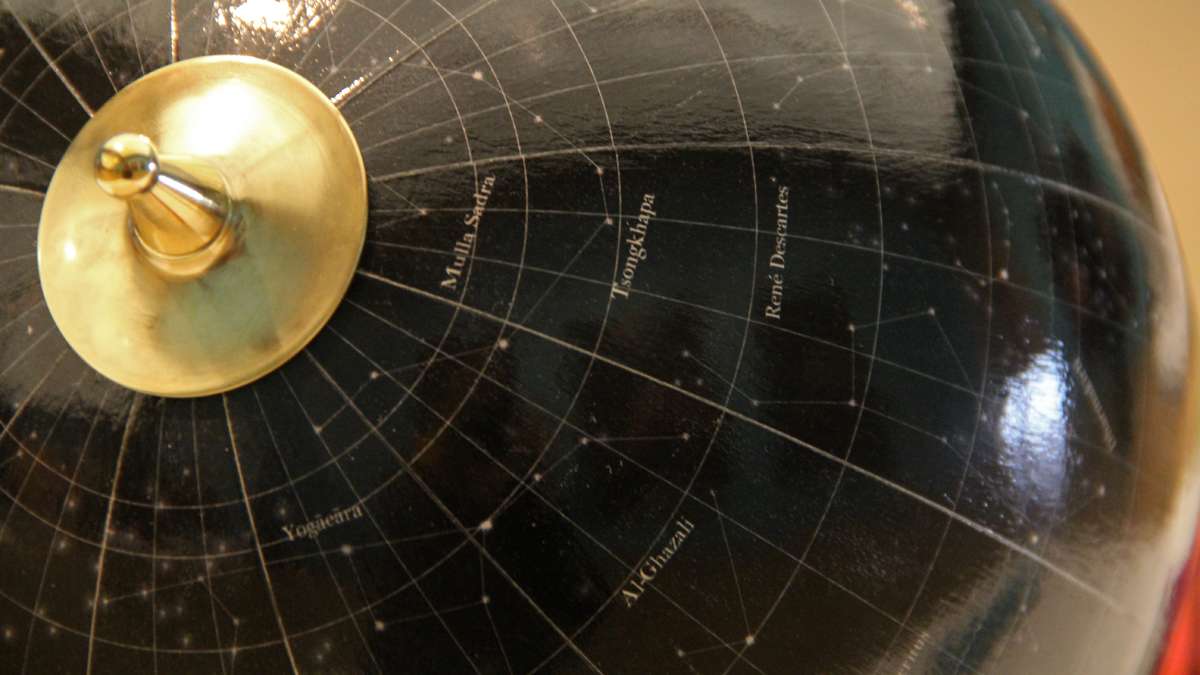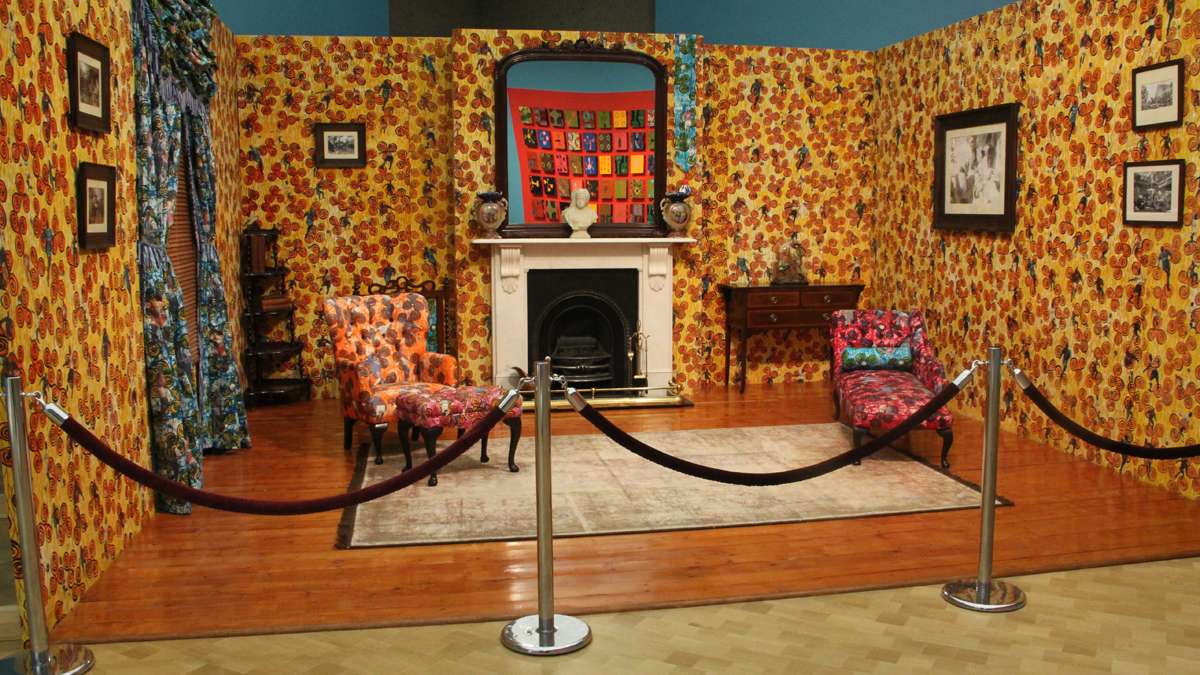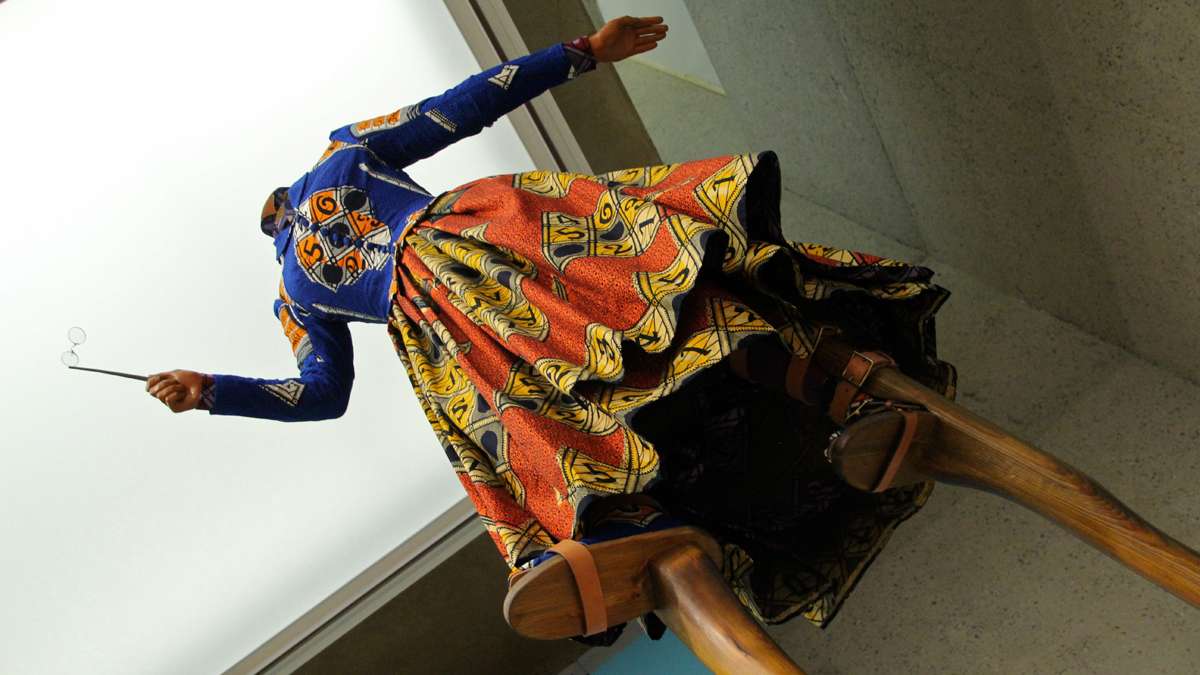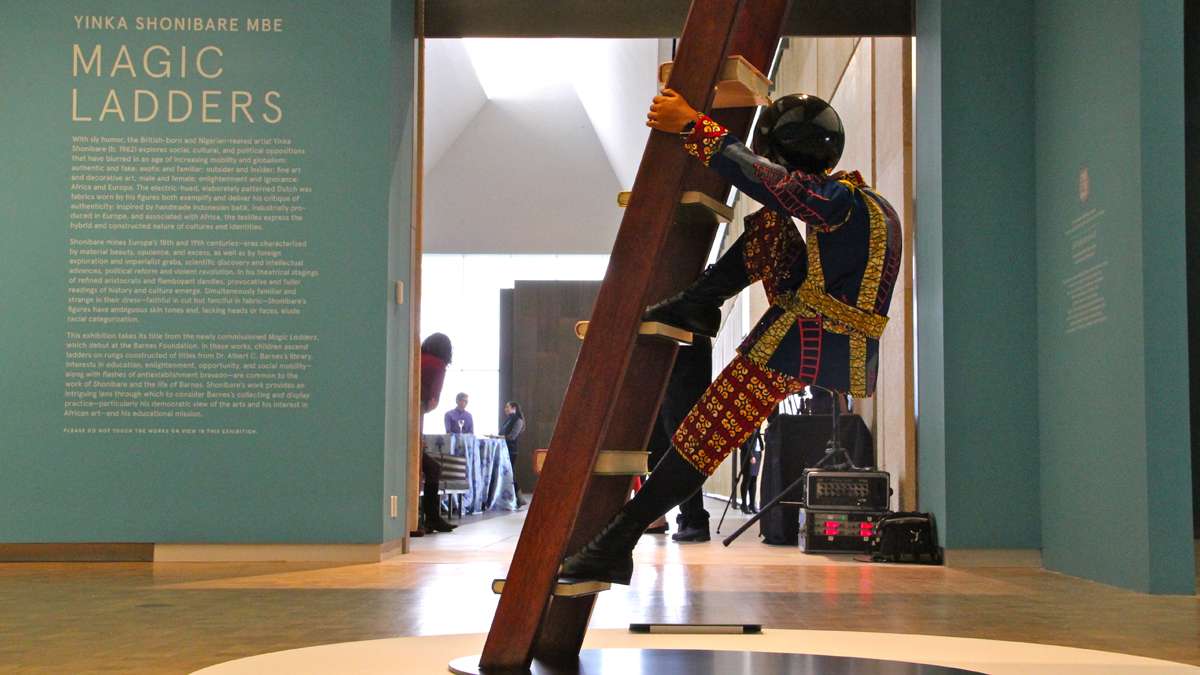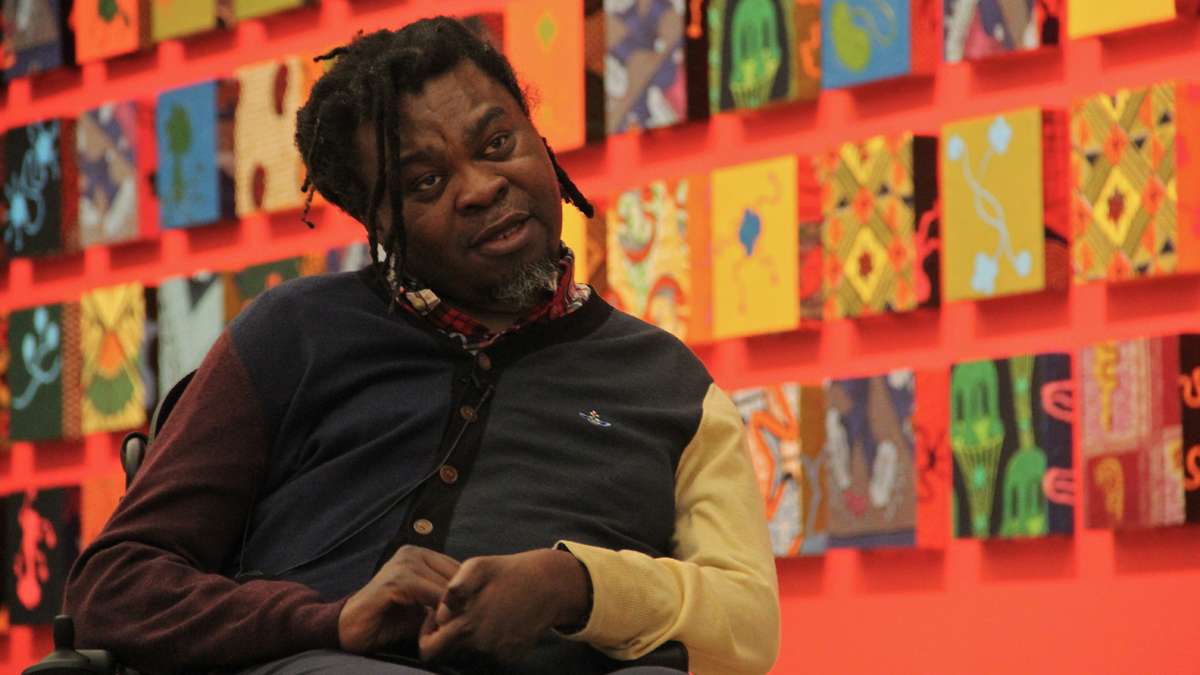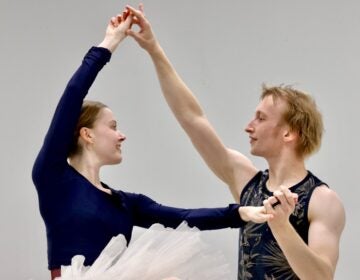Barnes Foundation commissions first work in eight decades
This weekend, the Barnes Foundation in Philadelphia will exhibit the first works it has commissioned in more than 80 years.
A series of three pieces by Yinka Shonibare — called “Magic Ladders” — will be featured in a 17-piece retrospective of the artist at the Barnes, “Yinka Shonibare MBE: Magic Ladders.”
Shonibare is a British artist of Nigerian descent. Born in London, he was mostly raised in Lagos and returned to London to study art. His sculptural and installation work examines the conflicted relationship, both cultural and economic, between Europe and Africa.
Most of his work features brightly-patterned textiles which have become the signature style of African clothing. But the fabrics are not African. They are patterns mass-manufactured in the Netherlands, based on Indonesian patterns, shipped in huge quantities to West Africa.
The artist is critical of this kind of economic globalization — particularly as an outgrowth of past colonialization — but this is not necessarily an indictment. The clothes look great. One of his pieces, “Big Boy,” is 7-foot, headless mannequin dressed as a dcapper, 18th century English dandy, in African fabrics (which are not really African, natch).
The figure, posed powerfully and proudly, seems to be hugely enjoying himself in these clothes. The criticism, however, is right there in the title.
“As an African who grew up in a very cosmopolitan city, and grew up watching Sesame Street, I couldn’t figure out what authenticity might mean for a modern African,” said Shonibare.
Most of his work involves mannequins — headless, to strip them of racial identify — dressed in Enlightenment-era clothes cut from quasi-African fabrics. The 18th and 19th century petticoats, knee-length breeches, and cravats are exquisitely tailored in explosively colorful patterns.
Most of the pieces were made in the last 10 years, as the United States and England were fighting in Iraq. Shonibare equates the urge to seed democracy to the Middle East to Europe’s past desire to spread its Enlightenment-era scientific philosophies.
“I was starting to question the premise of the Enlightenment as something that can be removed out of context and imposed onto other cultures,” said Shonibare. “Divorcing ideas from local peoples cultures is somewhat suspect.”
Shonibare’s newer works have been focused on children. Unlike their adult counterparts without heads, these mannequins of boys and girls have heads made of globe-shaped star charts. The three newly commissioned works are “Magic Ladders,” in which these children are climbing ladders made of books from Albert Barnes’ personal library.
The rungs are wooden recreations of early 20th century art tomes about Degas, Picasso, Goya, Rubens, written in German, French, Spanish, and Italian. A nod to Barnes’ other prominent passion, Shonibare included “Cassell’s Guide to Gardening.”
Curator Judith Dolkart says the artist and Doctor Barnes share an optimism for future generations.
“Both Shonibare and Barnes are and were interested in exploring the opportunities that education can provide,” said curator Judith Dolkart. “That’s clear in Shonibare’s ‘Magic Ladders,’ in which children are ascending books into the sky.”
Although the Barnes commissioned Shonibare to make these Magic Ladders, it does not own them. When the show ends in April, the ladders will go back to England with the artist.
WHYY is your source for fact-based, in-depth journalism and information. As a nonprofit organization, we rely on financial support from readers like you. Please give today.



